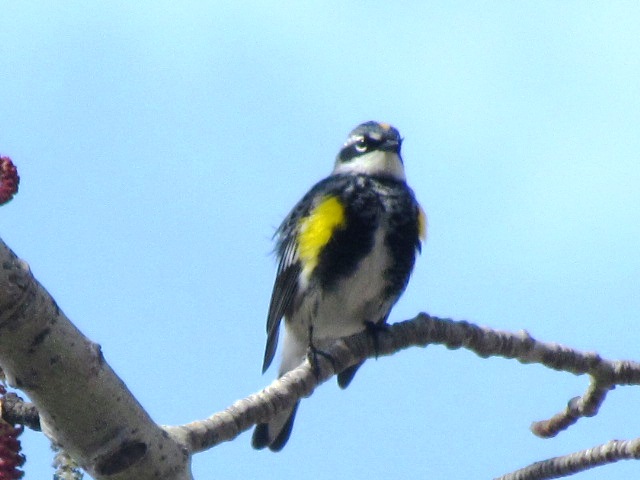Our travelling birders, Alan and Marg, have sent us some pictures of a species that has never appeared on the blog. They were driving along RR181 near Twp 172 when they spotted this bird.
Lark Buntings are very much a bird of the southeastern portion of the province, and breed on the native prairie grasslands. Adult males in breeding plumage are black with large white wing patches, and can’t be mistaken for any other members of the sparrow family. His bill is blueish, and the bottom mandible is paler than the top one. Adult females resemble the other brown, streaked sparrows.
You have to be fairly lucky to see these birds, and the Status of Birds In Canada explains why.
Lark Bunting populations are highly nomadic from year to year, avoiding areas of drought and seeking out areas with adequate rainfall.
This is a difficult species to survey, with populations shifting around the grasslands of North America in response to annual variations in climate. Data from the Breeding Bird Survey (BBS) in Canada show large fluctuations and it is not possible to determine the direction of the population trend. BBS data from throughout their range suggest a moderate decline since about 1970, but again, the nomadic nature of the species creates uncertainty in this trend estimate.
Because of marked fluctuations and contradications among the available data sources, it is not possible to determine the population status in Canada.
























